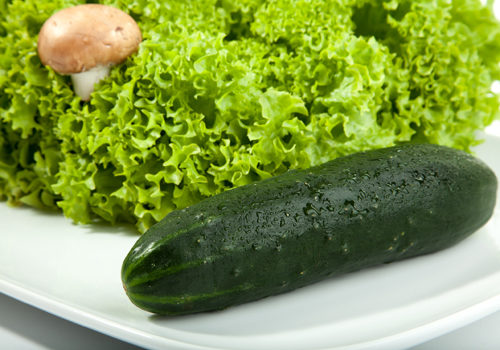
You have probably heard of the newly popular diet trend known as the Paleo Diet, which involves eating how your ancestors did over 2.5 million years ago. Although this diet doesn’t match caveman eating habits exactly, consuming nutrient-rich foods in whole form has always been a healthy choice for our bodies, even in the 21st century. As the Paleo Diet may not be for everybody, learn the pros and cons before you try it out.
What Is Paleo?
If we look at the foods Americans consume now in comparison to how individuals from prehistoric times ate, we notice that more variety is available today, and that food choices have evolved to include more processed forms. The Paleo Diet is all about staying away from processed foods and choosing modern foods that “mimic the food groups of our pre-agricultural, hunter-gatherer ancestors” (1).
So what is the Paleo Diet, you ask? The diet focuses on the consumption of plant-based food along with strong sources of protein from fish/seafood, meats, eggs, nuts and seeds. This includes non-starchy, high-fiber foods, but no refined or whole grains (yes, that includes oatmeal, brown rice and whole-wheat flour). The Paleo Diet incorporates dietary roughage from different sources and healthy fats such as olive, avocado and coconut oil. The diet excludes the intake of processed and artificial foods, dairy and legumes, along with added sugar and salt.
According to Diane Sanfilippo in Practical Paleo, there is “no one cookie cutter ‘Paleo Diet.’” Instead, Paleo is a template that allows individuals to make their own decisions about how to incorporate these foods into their lifestyle (1).
Why Do People Go Paleo?
The excitement of a new diet, weight loss, a more “natural” approach to health, prevention of illness and/or dealing with disease are all reasons why many people decide to alter their lifestyle to the Paleo approach. But, keep in mind that the diet prohibits certain food groups like grains (white or whole) and dairy. In contrast, the 2010 Dietary Guidelines for Americans highlight the importance of consuming “more of certain foods and nutrients such as fruits, vegetables, whole grains, fat-free and low-fat dairy products, and seafood” (2).
Every diet comes with precautions and concerns. You need to know and listen to your body’s needs as well as that of your nutritionist or dietitian to ensure you are receiving adequate nutrition for your lifestyle.
Making Paleo Possible
While diets can take some work, altering your lifestyle to the Paleo approach can be possible with some necessary considerations and precautions.
Your health. The Paleo regime may not be right for everyone, and is a flexible template that can vary by the individual (1). Some choose to incorporate some dairy, for instance, and others go without it. But, all adherents must be careful to make sure they get adequate intake of their macro and micronutrients daily, including, but not limited to, carbohydrates, protein, fat, vitamins and minerals. Since, for example, dairy is excluded from this diet, vitamin D, calcium and other nutrients need to be acquired from other sources, such as dark, leafy greens and a variety of fish. Dietitians and doctors commonly see deficiencies in Paleo dieters. Consumers need to know what nutrients they may lack and where to find these nutrients from other sources or from supplements. Talking with your health care provider, nutritionist or registered dietitian is highly recommended to ensure you are receiving adequate nutrition for your lifestyle. Both age and physical activity level are important factors to consider.
Preparation and alterations. If you are considering altering your lifestyle through the Paleo diet, you must take note of aspects that may change your daily routine. Knowing which foods are on and off the diet, reading food labels, preparing your own meals and just going out to dinner with your friends all may require adjustment. It is up to you to decide your level of commitment, and whether this will be a temporary or permanent change.
Cost. Paleo is often seen as rather expensive due to the cost of sustainable, nutrient-rich choices, such as organic-fed animals or fresh fruits and vegetables. There are many ways to lower costs such as buying local, buying in bulk or growing your own food. But on the flipside, premade and highly processed foods are also often very costly, so fitting Paleo foods into your food budget is likely possible.
Be aware. Keeping in mind the costs involved, how you feel and your overall health, shape your Paleo diet around your body’s needs and your lifestyle.
For additional information, sample diet plans and recipes, please go to thepaleodiet.com. WF
References
1. D. Sanfilippo, Practical Paleo: A Customized Approach to Health and a Whole-foods Lifestyle (Victory Belt, Las Vegas, NV, 2012).
2. Office of Disease Prevention and Health Promotion, “Dietary Guidelines for Americans, 2010,” www.health.gov/dietaryguidelines/2010.asp, www.health.gov/dietaryguidelines/dga2010/DietaryGuidelines2010.pdf, accessed on Dec. 29, 2014.
3. “What to Eat on the Paleo Diet,” The Paleo Diet, http://thepaleodiet.com/what-to-eat-on-the-paleo-diet, accessed on Dec. 29, 2014.
Published in WholeFoods Magazine, February 2015










